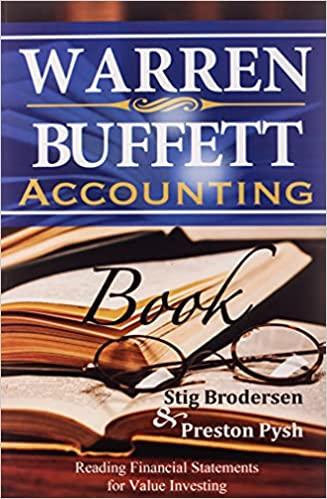

Groupon, Inc. (GRPN) Groupon Inc., headquartered in Chicago, IL, is a 'local commerce marketplace that connects merchants to consumers by offering goods and services at a discount'. Groupon began operations in 2008 as a private company and grew rapidly during the first few years. The Company filed its first Form S-1, the IPO prospectus, with the SEC on June 2, 2011 and successfully completed its IPO in early November 2011, selling 35 million shares at $20 per share to raise $700 million. The company's stock price, however, drifted from above $30 on November 4, 2011, its first day of trading as a public company, to under $10 within one year. In recent years, the stock price had been hovering between $3 and $6 until they conducted an unusual reverse share split (1 for 20) in June, 2020. Groupon has faced some accounting woes that arose right after it first filed Form S-1. On June 29, 2011, the SEC sent a comment letter to Groupon that presented a number of issues and inquiries about the Groupon S-1 filed on June 2, 2011. Groupon responded to the comments in correspondence dated July 14, 2011. If you are curious about the full exchange between SEC and Groupon, files can be located on EDGAR using filing type 'UPLOAD' (SEC letters) and 'CORRESP' (Company responses). Required: Obtain and read/review the following materials: o Readings on Non-GAAP earnings (under Course Readings on Blackboard) 'Companies' Non-GAAP Adjustments to Net Income have Soared', WSJ SEC Leads Crackdown on Non-GAAP Measures, CFO.com 'Companies are Winning the Battle over Adjusted Earnings, WSJ Under Assessments on Blackboard: Form S-1 filed by Groupon on June 2, 2011 Amended Form S-1 (S-1/A) filed by Groupon on November 1, 2011 The SEC's letter to Groupon dated June 29, 2011 Groupon's response to the SEC dated July 14, 2011 Groupon Q4 2020 Earnings Announcement on February 25, 2021 o Prepare a memo to address the questions below be sure to address all parts of each Questions to address in Memo: O O 1. Groupon and non-GAAP measures in 2011: In its original S-1 filing on June 2, 2011, Groupon presented a non-GAAP measure called ACSOI. It was later removed in an amended S-1/A after the SEC objected. What is ACSOI? How does Groupon define it? Why do you think Groupon chose to use this measure to supplement its GAAP earnings information in its S-1? Why did the SEC question the inclusion of ACSOI in Groupon's S-1? In your answer, discuss both the SEC's view and reaction to the expanded use of non- GAAP measures by companies in general and their specific concerns about Groupon's ACSOI measure. Do you agree with Groupon's argument that discretionary expenses, such as subscription acquisition costs, should be excluded from the financial measures of a company's performance? In general, what are some potential advantages and disadvantages of disclosing non-GAAP earnings? Do you feel that these measures can be informative to investors? Why or why not? O Groupon, Inc. (GRPN) Groupon Inc., headquartered in Chicago, IL, is a 'local commerce marketplace that connects merchants to consumers by offering goods and services at a discount'. Groupon began operations in 2008 as a private company and grew rapidly during the first few years. The Company filed its first Form S-1, the IPO prospectus, with the SEC on June 2, 2011 and successfully completed its IPO in early November 2011, selling 35 million shares at $20 per share to raise $700 million. The company's stock price, however, drifted from above $30 on November 4, 2011, its first day of trading as a public company, to under $10 within one year. In recent years, the stock price had been hovering between $3 and $6 until they conducted an unusual reverse share split (1 for 20) in June, 2020. Groupon has faced some accounting woes that arose right after it first filed Form S-1. On June 29, 2011, the SEC sent a comment letter to Groupon that presented a number of issues and inquiries about the Groupon S-1 filed on June 2, 2011. Groupon responded to the comments in correspondence dated July 14, 2011. If you are curious about the full exchange between SEC and Groupon, files can be located on EDGAR using filing type 'UPLOAD' (SEC letters) and 'CORRESP' (Company responses). Required: Obtain and read/review the following materials: o Readings on Non-GAAP earnings (under Course Readings on Blackboard) 'Companies' Non-GAAP Adjustments to Net Income have Soared', WSJ SEC Leads Crackdown on Non-GAAP Measures, CFO.com 'Companies are Winning the Battle over Adjusted Earnings, WSJ Under Assessments on Blackboard: Form S-1 filed by Groupon on June 2, 2011 Amended Form S-1 (S-1/A) filed by Groupon on November 1, 2011 The SEC's letter to Groupon dated June 29, 2011 Groupon's response to the SEC dated July 14, 2011 Groupon Q4 2020 Earnings Announcement on February 25, 2021 o Prepare a memo to address the questions below be sure to address all parts of each Questions to address in Memo: O O 1. Groupon and non-GAAP measures in 2011: In its original S-1 filing on June 2, 2011, Groupon presented a non-GAAP measure called ACSOI. It was later removed in an amended S-1/A after the SEC objected. What is ACSOI? How does Groupon define it? Why do you think Groupon chose to use this measure to supplement its GAAP earnings information in its S-1? Why did the SEC question the inclusion of ACSOI in Groupon's S-1? In your answer, discuss both the SEC's view and reaction to the expanded use of non- GAAP measures by companies in general and their specific concerns about Groupon's ACSOI measure. Do you agree with Groupon's argument that discretionary expenses, such as subscription acquisition costs, should be excluded from the financial measures of a company's performance? In general, what are some potential advantages and disadvantages of disclosing non-GAAP earnings? Do you feel that these measures can be informative to investors? Why or why not? O








